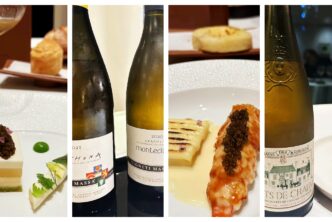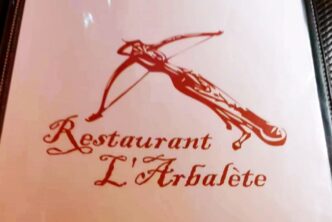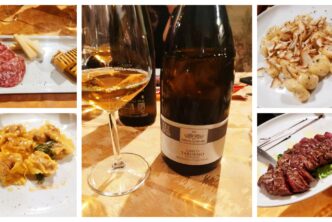Chiuchow Darling Restaurant
120 Jin Xian road
Shanghai
The dishes
Lion Head goose meat, Lion Head goose wings,
Half squid
Yellow footed standing fish rice
Fried rice cake meat
Braised beef ribs with turnips
Braised beef cubes with fresh pepper in pot
The wines
Chateau Poujeaux 2015 Chateau Poujeaux Moulis Bordeaux 93
Carneros Creek 1978 Merlot Turnbull/Fay Vineyards Napa Valley 92
Von Kesselstat 1989 Scharzhofberger Riesling Beerenauslese 96
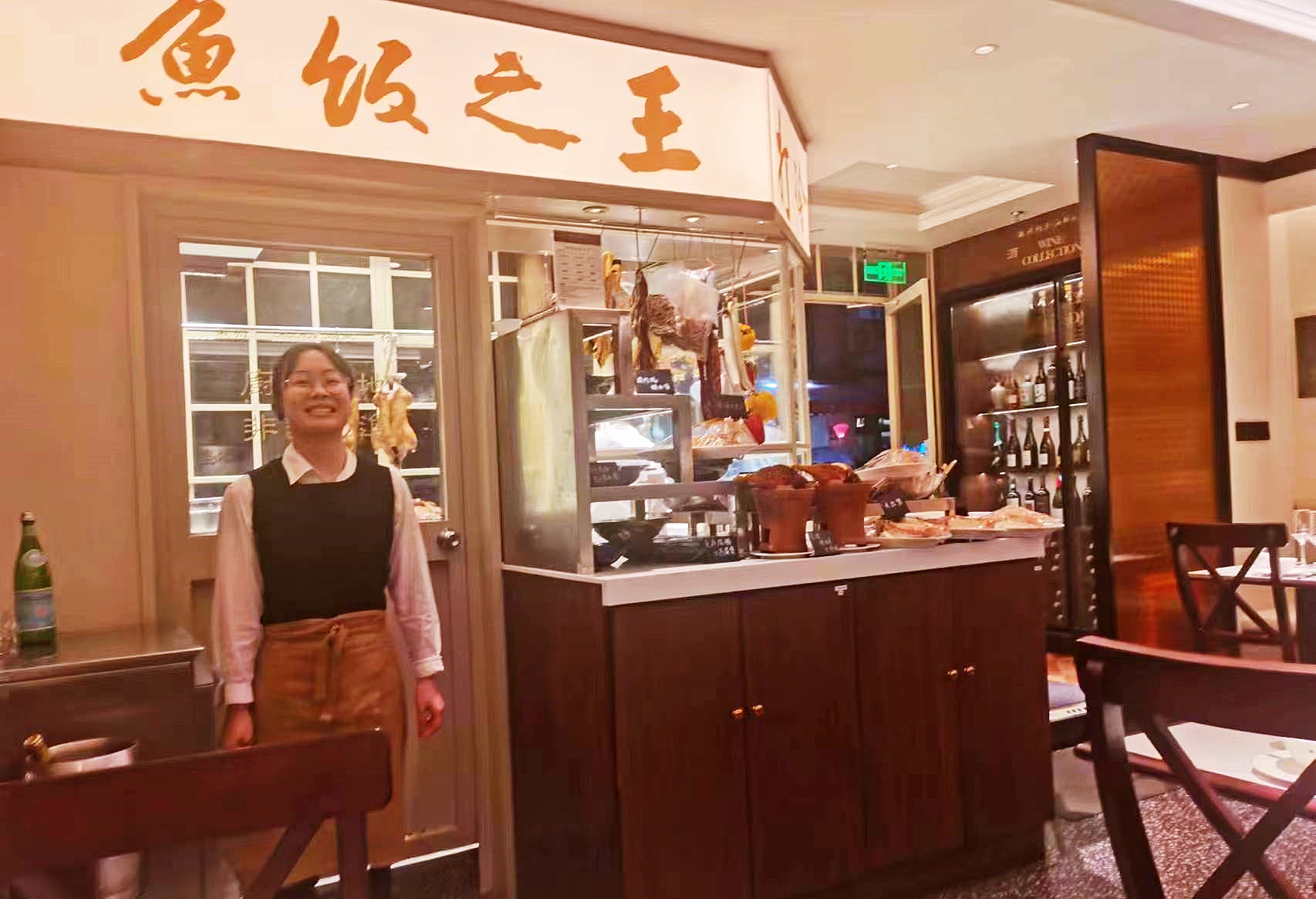
Chiuchow cuisine (also known as Chazhou or Teochew cuisine) originates from the Chaoshan region of the eastern part of China’s Guandong province. In fact, the word “Chaoshan” is actually born from the contraction and unification of the names of two prefecture-level cities of the area, Chaozhou and Shantou, hence Chaoshan. This new name was first used in 1904 construction of the railway which connected these two major cities, and the name has stuck. In fact, Chaozhou (also known as Chiuchow or Teochew) is a Chinese city the territory of which borders Shantou to the south, Jieyang to the southwest, Meizhou to the northwest, the province of Fujian (world-famous Chinese region for its tea) to the east, and the South China Sea to the southeast.
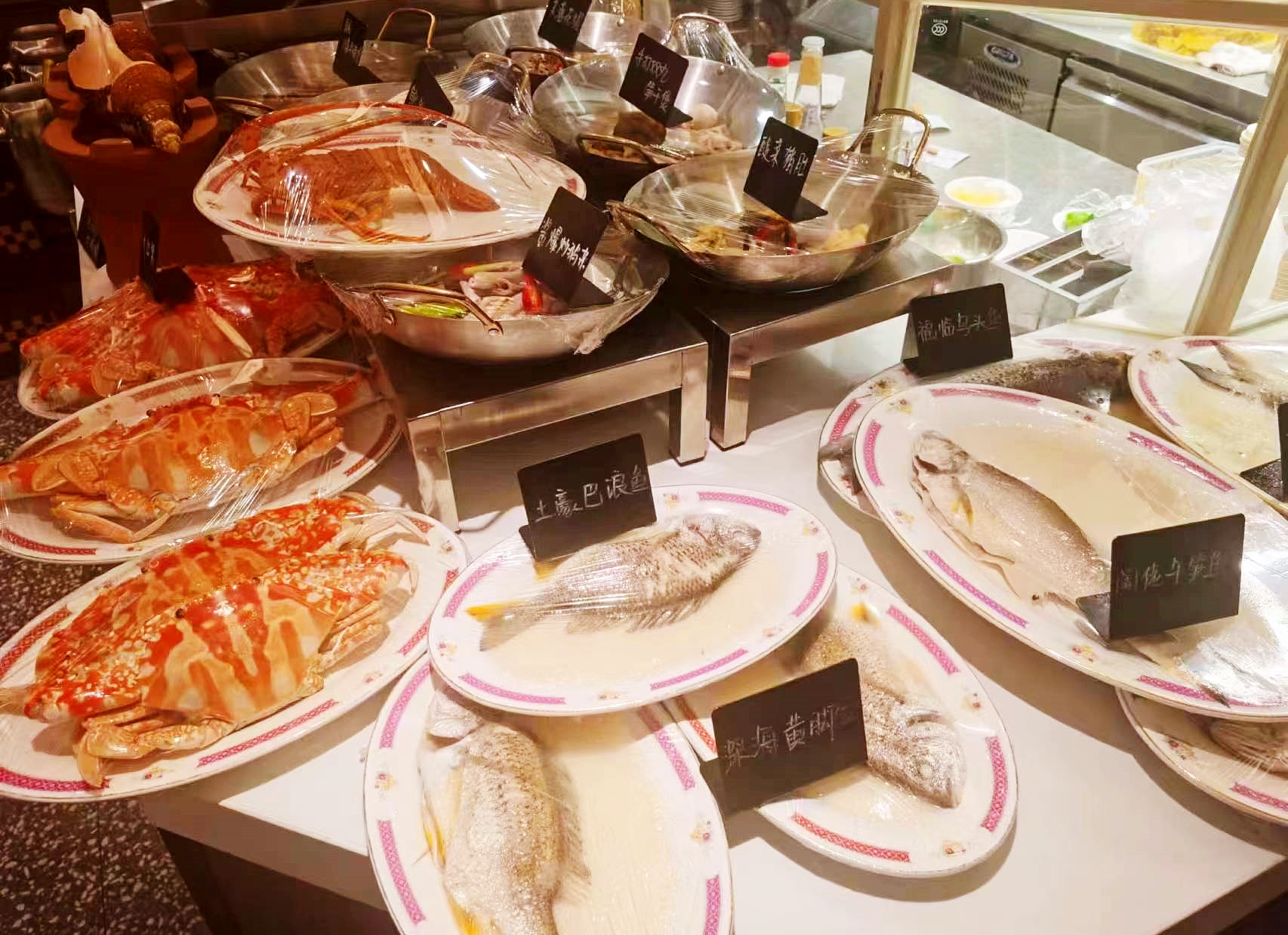
Speaking broadly, Chiuchow cuisine resembles that of Fujian (and to be precise, particularly Southern Min cuisine), and this for both geographic and cultural reasons. That much admitted, it is undeniable that Chiuchow cuisine also owes a little something to Cantonese cuisine, as anybody with a little experience with China’s many cuisines won’t have any trouble recognizing the Cantonese influences in Chiuchow’s style and cooking techniques. (In fact, cultural and gastronomic influences are always a two way-street, so it won’t surprise you to know that emigration being what it is, there are in turn clear-cut influences of Chiuchow cuisine of those of Singapèore, Malaysia, Hong Kong, and especially Taiwan, were a large number of Chiuchow expats have set up shop and home.) In any case, Chiuchow cuisine is a much lighter, fresher cuisine than the Cantonese, and save for some borrowed ideas, the dishes remain fairly different: witness the congees (mue) of each where the watery-soup like Chiuchow version as very little in common with the porridge like one of the Canton school of cooking things. In fact, Chiuchow is one of the more delicate of all China (in this, it resembles closest the cuisine of the ZheJiang province, such as those of Ningbo and Taizhou). For this reason, it is also a much less oily cuisine than others in China (think Sichuan, for example) and relies more on braising, poaching and steaming (and stir-frying, of course).
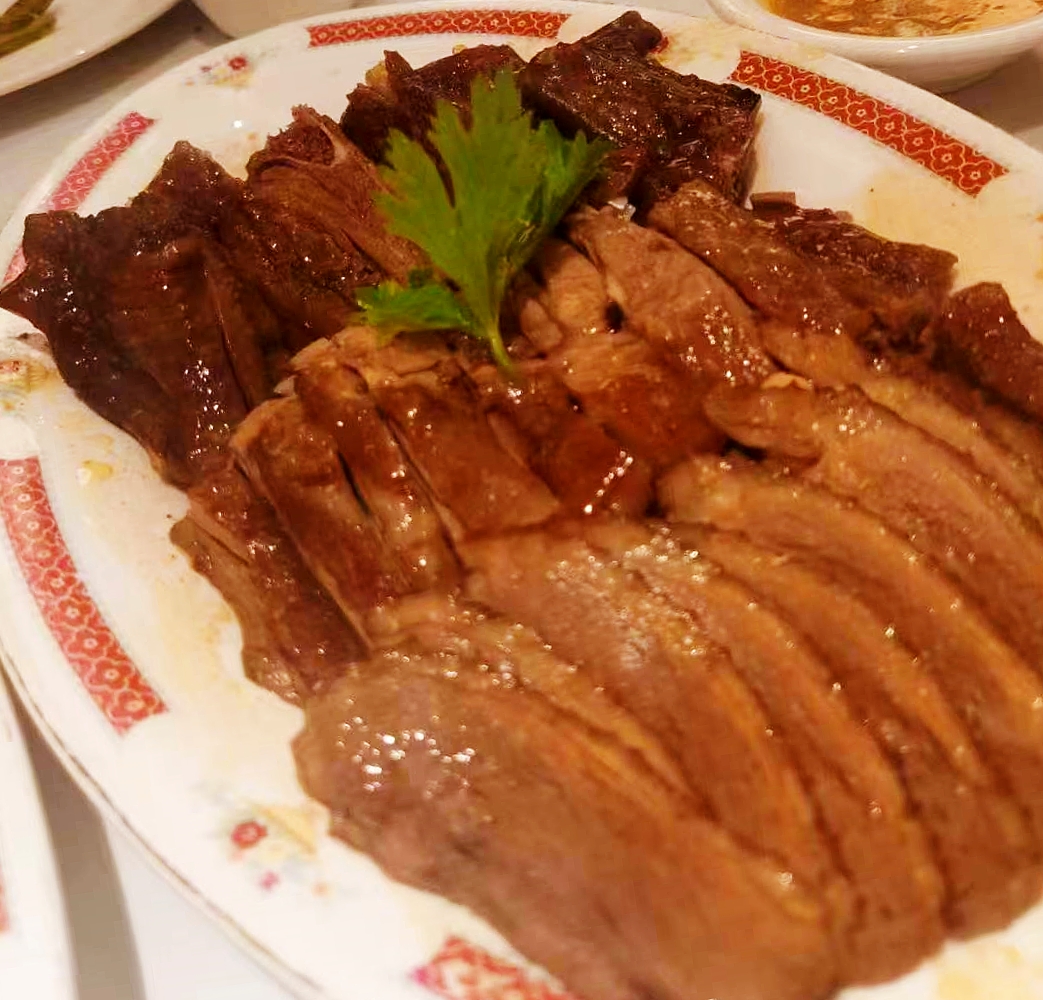
Typical dishes of Chiuchow cuisine include Chaozhou brined meat (where the brine is a soup flavoured with cinnamon, star anise, soy bean paste, green onion and ginger) and the normally brined meat include pig trotter, duck, eggs and more still); Oyster omelette, always a favourite and a typical breakfast food too featuring, you guessed it, oysters and eggs (plus a little tapioca starch) often accompanied by fish sauce; Beef Koay Teow soup, where koay teow is a kind of rice noodle, and the soup always contains meat ad beef balls; Teochew porridge, one of my favourites, is a liquid, and rather healthy, staple food of the area, in which crab and shrimp are placed in the thin soupy porridge and give it flavour; and last but not least, the Chaoshan hot pot. Sauces are not as heavily used as in other Chinese cuisines, but duck sauce and especially shacha sauce (made from garlic, shallots, soybean paste, chilies, brill fish and dried shrimps) can be used as a rub for meats, in soups, or in dipping sauces.
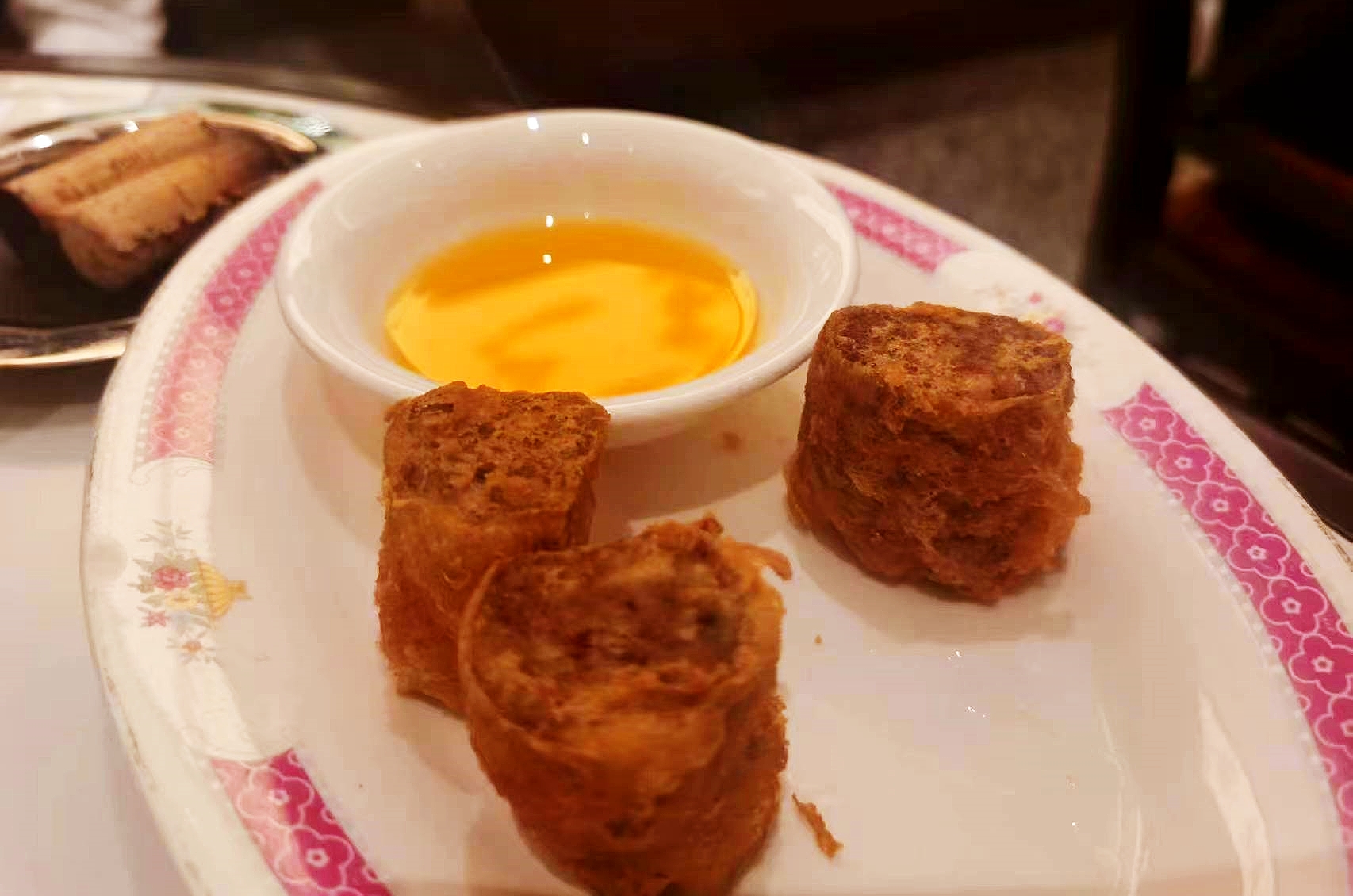
The chef at the Shanghai branch of Chiuchow Darling is known as Chef Rong, and he hails from Guangzhou, where I am told he is quite famous. Actually, all the chefs in the restaurant are from Guangzhou, perhaps not surprisingly given that the head company is based there. This branch is a relatively new opening (in December 2023), headed by a vos families Shanghai-based team, but the company owns other restaurants, for example in Guangzhou, Shantou, and Hong Kong. Though many different dishes are offered, goose and seafood are the staples they are most famous for. The goose is especially interesting, as its name, or rather nickname, “Lion Head” (shitou) implies: this is a special breed of goose typical of the Chaoshan region of Guangdong, known for its large dewlaps and black crown (hence the “lion head” nickname). It is the largest of the many kinds of raised Chinese geese (adults can weigh as much as 9-12 kilograms), and for this reason it is also nicknamed the “king of goose”. [Goose is so important in this region’s cuisine that yet another famous dish that identifies it is the “Eight treasures of goose” (also served at Chiuchow Darling restaurant) that includes the goose head, neck, gizzard, liver, intestines, wings and feet served on a platter.]
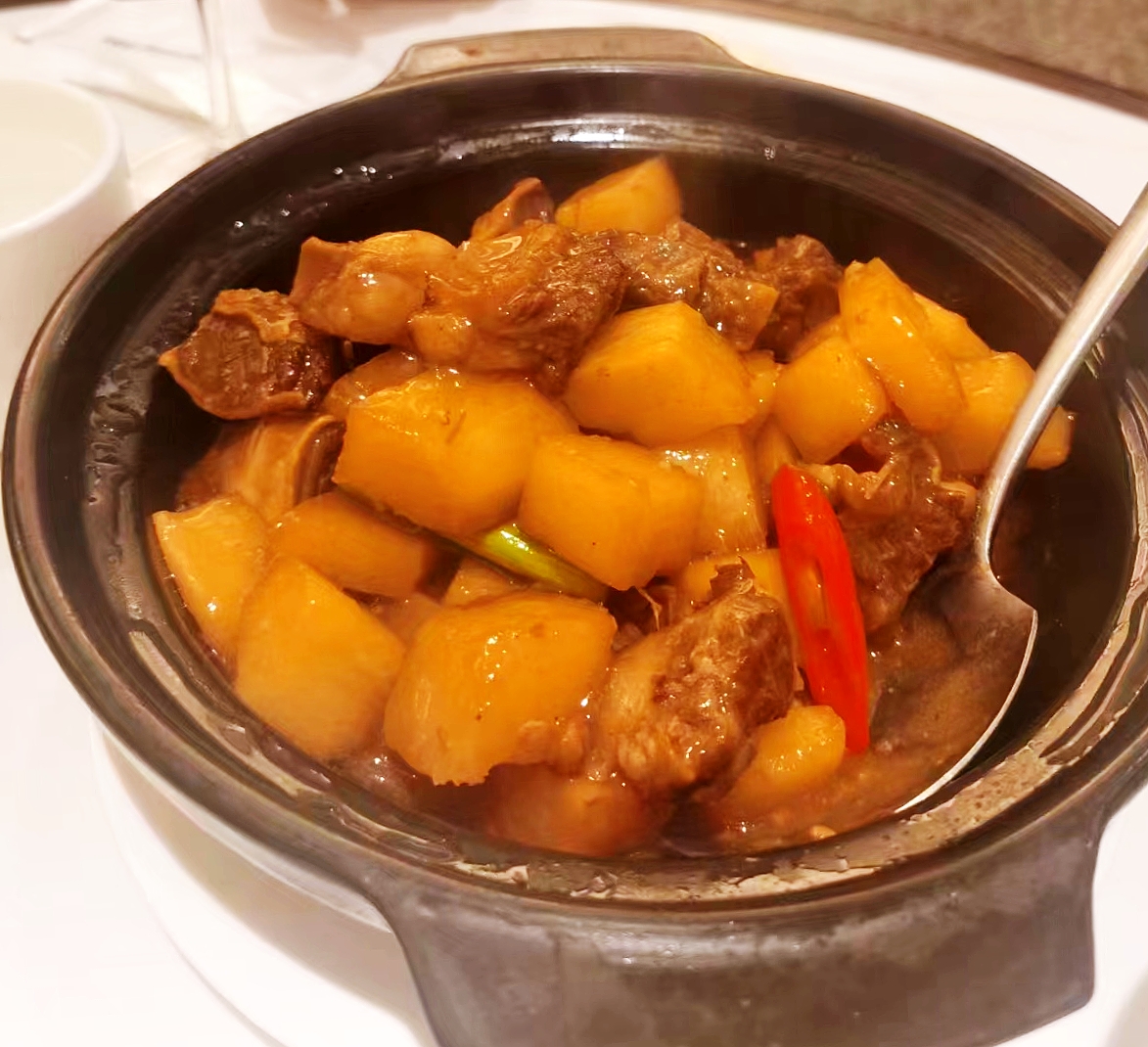
But at Chiuchow it is not just all about the food. In the Chaoshan area, locals are historically accustomed to drinking a strong Oolong tea called Tieguanyin (gongfu tea). I personally love tea, and never tire of trying different kinds (red, green, black white and yellow all have the positive traits) and terroirs (Longjin, Fujian…) but when out with wine-loving friends our drinking choices are usually wholly devoted to the nectar of Bacchus. And so wine it was on this night, though this one time it was specifically chosen to pair with some of the meat dishes we wished to try this time around (normally, at Chiuchow Darling a long lineup of Rieslings, Etna Bianco, Müller-Thurgaus, Sylvaners, Grüners, Chablis, and similar wines would be the go-to choices).
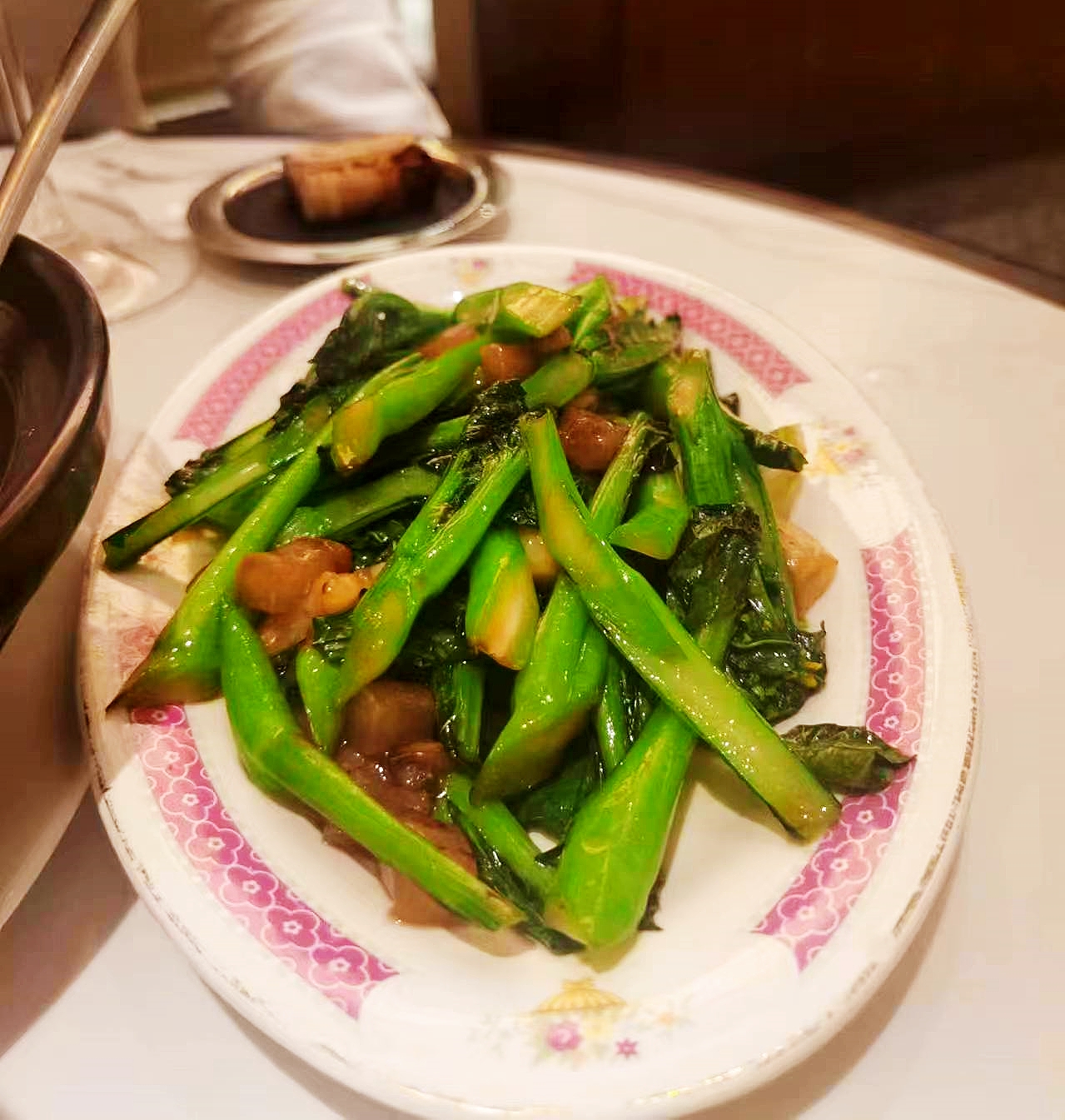
You realize the restaurant is an enterprise that truly cares about it’s customers when you find out that it has a sommelier: and a good one at that. Now really: in how many simple family-style, every day Chinese eateries in malls or in non-descript roadside buildings do you know of back home that have a somm? Well, Chiuchow Darling restaurant’s sommelier Haifang Xu is a gem: easy-going, courteous, likeable, knowledgeable, and not at all pushy. She has had excellent training and has worked in some truly stellar restaurants in China including LAGO by Julien Serrano and those of the high-end Vos Families dining empire (that includes well-known upscale restaurants such as Ottimo and Suzie). And you understand that Haifang Xu is the right person in the right job when you learn about her preferences in wine and what she likes to serve with Chiuchow Darling’s food: Chenin Blanc, Aligoté, Etna Bianco, Riesling, and Chardonnay amongst the whites, Pinot Noir and Etna Rosso amongst the reds. Frankly, in consideration of the food served in the restaurant, it’s hard to conjure up a better list of grapes and wines than that. And how refreshing to hear her say that the Chiuchow/Chaoshan/Chazhow/Teochew (go ahead, pick the name you like) cuisine demands wines of purity and minerality as opposed to heavier wines that would mask the delicate traits of most of the dishes. She points out however that some spirits and Chinese yellow wines also match remarkably well with some of this cuisine’s dishes, and I don’t doubt her. After all that, we threw her a curve ball in that we wanted to focus on the meat dishes (beef, goose), and so the evening called for some red wines (one we brought from home and one we bought off the restaurant list that we paired with the beef), but we also brought along a late harvest German Riesling we wished to try with the goose.
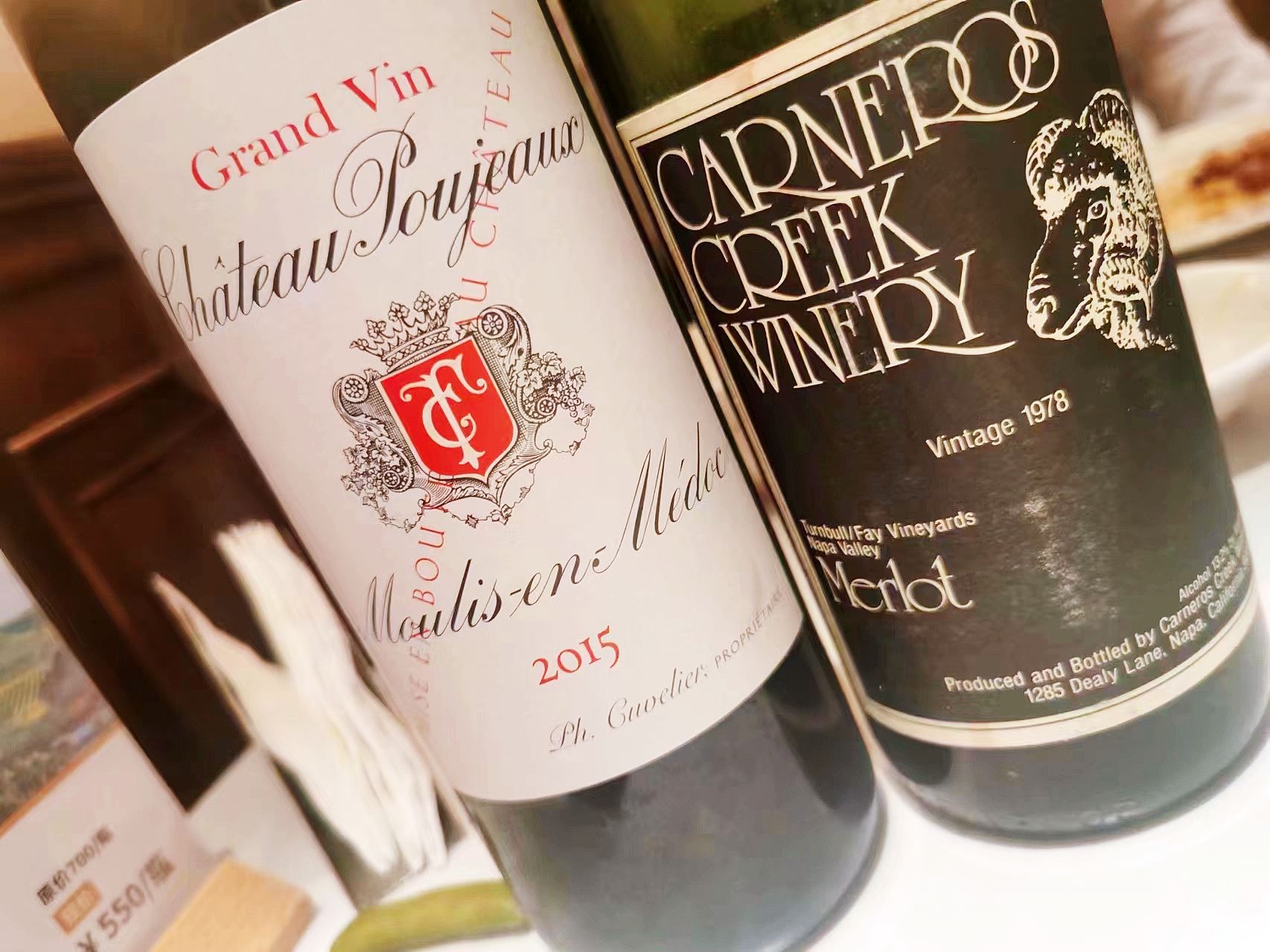
Like the evening’s food, our wines performed splendidly. The Chateau Poujeaux 2015 Chateau Poujeaux Moulis Bordeaux is a gem. Now owned by the Cuvelier family and with the winemaking overseen by Stéphane Derenoncourt, the 2015 is a gorgeously creamy, fruit.-forward supple but layered blend of 50% Cabernet Sauvignon, 42% Merlot, 6% Petit Verdot and 2% Cabernet Franc. Dark cherry and mocha aromas and flavours dominate, but it’s the polished tannins that make this match heavenly with our beef dishes. The Carneros Creek 1978 Merlot Turnbull/Fay Vineyards Napa Valley has held up remarkably well, and at 46 years of age, it is still none the worse for wear. It has dropped some of its fruit, leaving behind a skeleton of acids and tannin, but the acid-tannin-leftover fruit balance is still very harmonious and makes for quite an enticing drink. Dried black cherry, plums, cigar box, cedar, coffee and dried herbs linger nicely on the lifted, light on its feet finish. Last but not least, and actually the WOTN, the Von Kesselstat 1989 Scharzhofberger Riesling Beerenauslese is just superb. Laser-like purity and precision of stone fruit and sweet spices, complicated by sweet and sour notes of lime and a piquant lemony acidity that really extends and nicely frames the luscious but exceptionally lifted fruit flavours on the extremely long back end. This was obviously an exceptionally well-stored bottle making the 35 years old wine seem two decades younger (I bought it only about seven years ago, so I can’t take credit for the marvellous state the wine was in). At Von Kesselstat they know a thing or two about wine, given that the estate celebrated in 1999 its 650th anniversary (the winery was founded in 1349 and that is also the date of the document detailing the first vineyard purchase). In 1978, the estate was sold by the Reichsgrafen (Imperial Counts) to the Günther Reh family, and smart acquisition given its fair to say that no other German wine estate boasts ownership of so many top vineyard sites in the three valleys of the Mosel, the Saar and the Ruwer. The fabled Scharzhofberger vineyard is one of the world’s most famous vineyards, a grandest cru amongst grand crus if you will, form where some of the purest, steeliest and most mineral Riesling wines are made. The half bottle was emptied in the time it takes to bat an eyelash: that’s how good that nectar was. It brought a wonderful evening of fun and friendship to a magnificent, memory-worthy close.
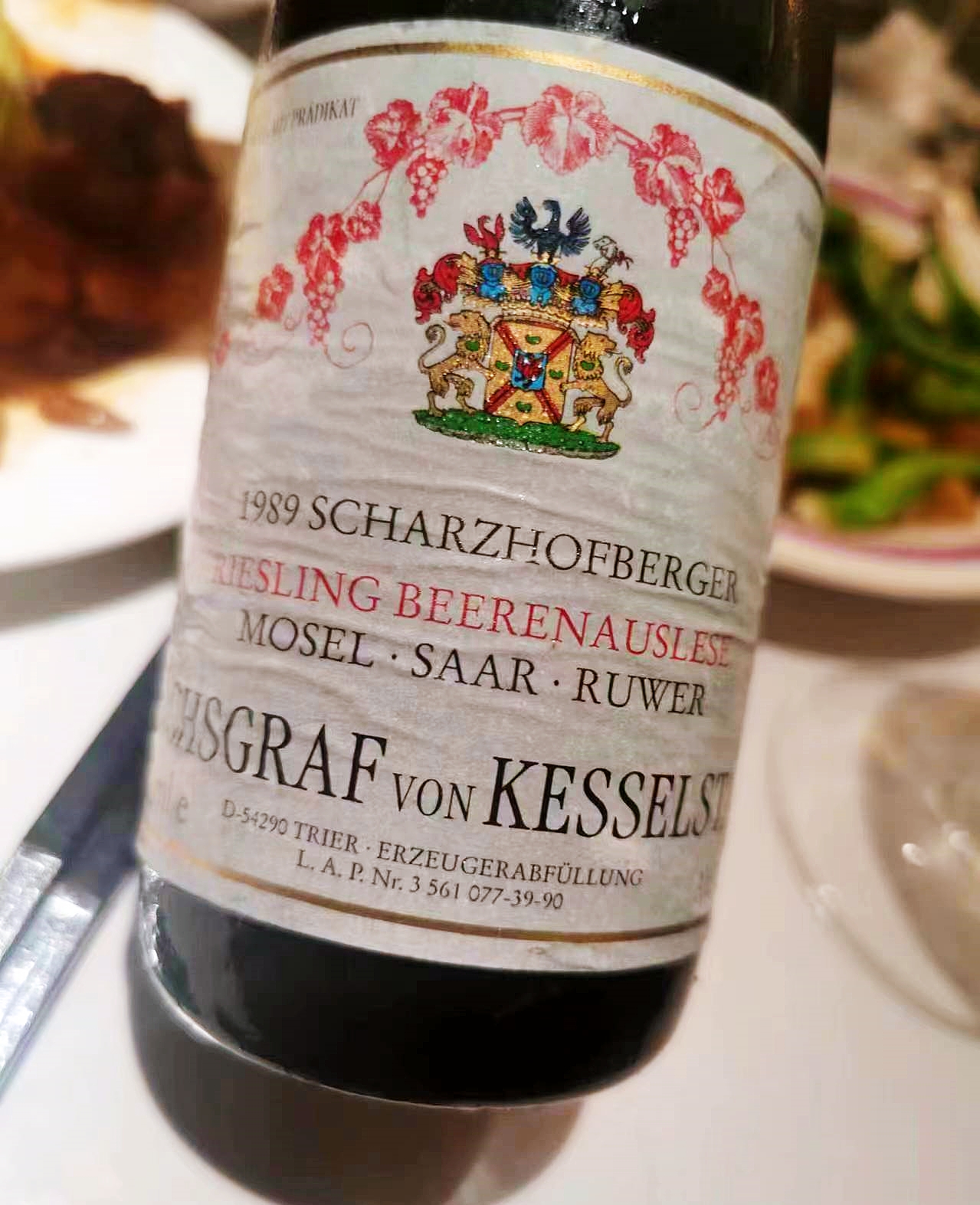

 中文
中文
